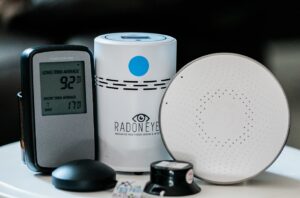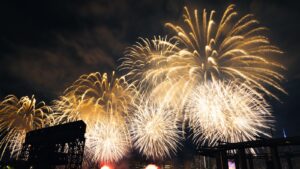4th July fireworks had huge impact on New York air quality
Following the serious air quality issues caused in the US by Canadian wildfires over the past few weeks, many cities decided against holding a tradition 4th July firework display, opting instead for drone light shows.
The Macy’s Independence Day display however, was too big an institution to bow to mere health worries and went ahead as usual.
The 47th annual event was a 25-minute ‘extravaganza’ with ‘a whopping 60,000 shells’ launched from barges stationed along the East River in Midtown Manhattan. That’s an average of 40 fireworks going off every second.
Among the crowds present at the display was Professor Terry Gordon from NYU’s Department of Medicine with a team of students and a bunch of monitoring equipment.
‘The conditions were just perfect for worse air quality.’ he said, ‘low airspeed, and the wind really wasn’t blowing this way or that way. So the concentrations were very high on both sides of the river.’
The display began at 8pm and almost immediately the students saw the levels of particulate matter soaring.
However, it was not until 1am on Wednesday morning that the Air Quality Index peaked at 434 across the city. The highest number on the Index’s warning system is 301, which is described as ‘hazardous’ and comes with the messsage: ‘Health warning of emergency conditions: everyone is more likely to be affected’.
By 7am the levels had improved to the point where the air was merely ‘unhealthy’.
Similarly air quality in Los Angeles dropped into unhealthy levels right around 10pm but took some hours to descend into the hazardous range.
Professor Gordon has researched the toxicity of particles emitted by fireworks in the past, hence his presence in Manhattan this week.
His 2020 study tested a variety of fireworks, examining the impacts of the metals they contain to facilitate their colour-changing effects. The research found that particulate matter generated by fireworks was considerably more toxic than typical urban PMs.
The levels of toxicity depended on the chemical present. While all contained high levels of sulfur, potassium, and chloride, others were found to variously contain copper, barium, strontium or aluminium.
The quantity of lead found was remarked upon: ‘A particular concern in our findings is the disturbing amount of lead in two of the tested fireworks. At 40,000 ppm, it is likely that lead was not an inadvertent contaminant in the Black Cuckoo PM10 sample, but purposely added to the product for achieving the desired effect in the fireworks.’
The research concludes: ‘These findings bring up the obvious question of whether adverse cardiopulmonary effects are associated with exposure to fireworks-linked metals during these holiday periods. Responsible manufacturing can have a major impact on reducing toxic metals in both commercial and residential pyrotechnics displays and their potential for producing adverse health effects.’















